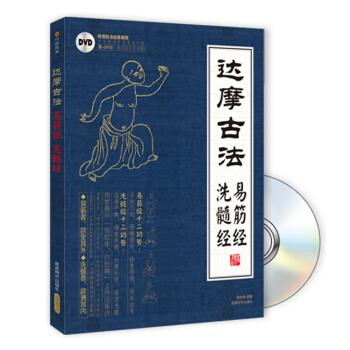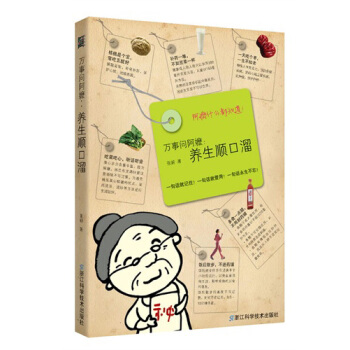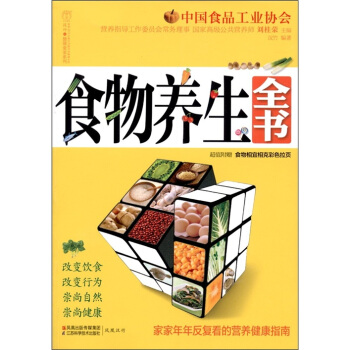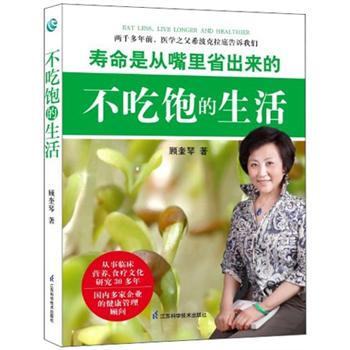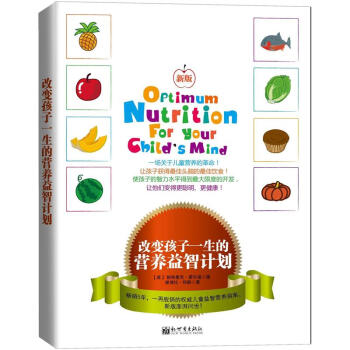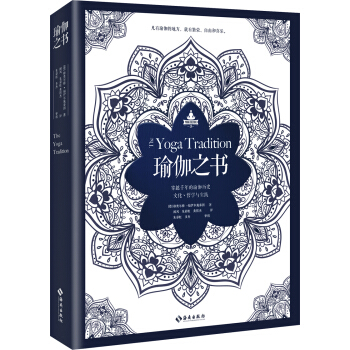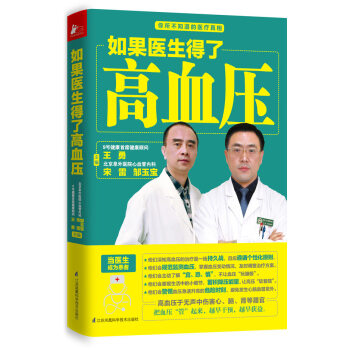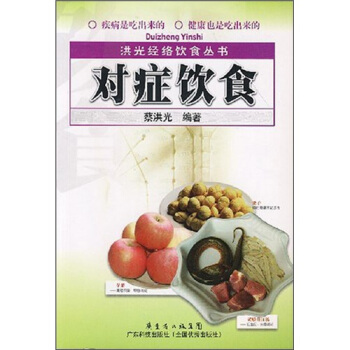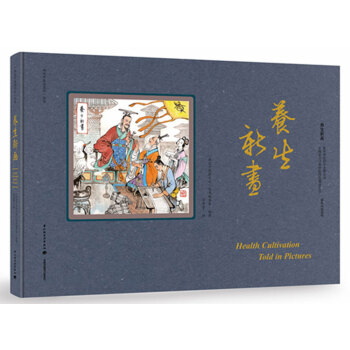

具体描述
内容简介
“画说中医药文化”丛书是第一部将中医药文化与中国传统连环画完美结合的图书作品,中英文双语对照,包含《中医史画》、《养生新画》、《药膳趣画》3本图书,丛书希望以通俗易懂的语言、形象生动的绘画让更多人了解中国文化的瑰宝——中医药文化,并通过“一带一路”促进中医药走向世界;也同时传承了中国独有的艺术形式——连环画。
养生,古亦称摄生、治身、道生、卫生等,中医养生历史渊源流长,数千年的中医药发展史,记录着无数先辈前贤对养生保健、延年益寿的丰富经验及学术成就。《画说养生》一书,以中医传统典籍、中医养生专著为范围,以理论性、人文性、实用性、针对性为标准,对中医养生之史、养生之道、养生之术等择其精要,以文释图,以图示文,汇成一册,以冀勾勒出中医养生文化的大体轮廓。
本丛书已被列为上海市卫计委中医药发展办公室和世界中医药学会联合会推荐科普读物。
作者简介
本丛书编写由上海浦东新区中医药文化发展专委会发起,以上海中医药大学专家为骨干,汇聚中医界、科普界、出版界专业人士共同完成。编写过程中更得到了世界中医药学会联合会,以及多位院士、国医大师的指导。
李其忠(《养生新画》主编)
上海中医药大学教授,博士生导师。曾任上海中医药大学基础医学院院长、中医基础理论研究所所长、中医药文化研究与传播中心常务副主任,曾被聘为法国杵针中医学院兼职教授,亚健康中医治疗首席专家。
目录
前言
Preface
推荐序
Preface
养生历史 源远流长
A Time-Honored History
渐感于心,模而仿之
Observation and imitation
诸子之说,养生发端
Theories on health cultivation
岐黄论道,奠定基础
The Yellow Emperor’s Internal Classic
专论专著,始有问世
Books exclusively dedicated to health cultivation
《千金要方》,养生为先
Formulas Worth a Thousand Gold Pieces
养生著作,大量涌现
Emergence of numerous books on health cultivation
学术争鸣,促进发展
Diverse academic ideas on health cultivation
养生理念,更趋实际
Practical ideas on health cultivation
系统总结,侧重继承
Theoretical generalization
养生风尚,由衰至盛
From decline to flourish
养生理论 特色鲜明
Characteristic Theories
天人相应,趋利避害
Seek advantages and avoid disadvantages through man-nature harmony
天地相参,日月相应
Correspondence between man with the heaven/earth and sun/moon
形神共养,尽终天年
Keep the body and mind together and live a full span of life
未病先防,未乱先治
Prevent ailments before it arises and prevent troubles before they occur
日出而作,日落而息
Get up at sunrise and rest at sunset
流水不腐,户枢不蠹
Running water is never stale and a door-hinge never gets worm-eaten
志闲少欲,形劳不倦
Mental and physical relaxation
养性之道,常欲小劳
Moderate physical activities
『春气发陈』,以使志生
The qi of spring boosts the will on life
孟春回暖,还防余寒
Protection against cold in Meng Chun
仲春物荣,衣着『春捂』
Stay warm in Zhong Chun
季春温暖,当防『春困』
Prevent the ”spring sleepiness” in Ji Chun
夏气『蕃秀』,使气得泄
The qi of summer unblocks the skin pores
孟夏转热,饮食宜忌
Food recommendations in Meng Xia
仲夏多雨,慎防『疰夏』
Prevent ”summer sickness” in Zhong Xia
季夏入伏,预防『中暑』
Prevent ”sun stroke” in Ji Xia
秋气『容平』,收敛神气
The qi of autumn keeps a tranquil mind
仲冬『入九』,祛寒避冷
Avoid exposure to cold in Zhong Dong
孟秋尚热,慎防『温燥』
Prevent ”warm dryness” in Meng Qiu
季冬寒盛,预防冻疮
Prevention of chilblains in Ji Dong
冬气闭藏,使志若伏
The qi of winter stores high aspirations
孟冬始寒,适宜进补
Take tonics in Meng Dong
仲秋转凉,衣着『秋冻』
Stay cool in Zhong Qiu
季秋已寒,谨防『凉燥』
Prevent ”cool dryness” in Ji Qiu
修德怡神,方能延寿
Virtues and longevity
莫虑莫念,据理应之
Do not worry about the future or dwell on the past
移情易性,调摄心志
Emotional adjustment and mental regulation
娱乐怡神,各有所医
Benefits of recreational activities
恬淡虚无,真气从之
Quiet peacefulness and absolute emptiness ensures a smooth flow of true qi
弈棋凝神,静气养性
Benefits of playing Go (wei qi)
和煦则春,惨郁则秋
Warm like spring, gloomy as autumn
冬不极温,夏不穷凉
Do not stay too warm in winter and too cool in summer
寤寐兴息,晨起有时
Appropriate time to rise
养生之诀,睡眠居先
Sleep and health
腰下常温,胸上稍凉
Keep the lower body warm and upper body cool
安身之本,必资于食
Health and food
食养之要,谨和五味
Balanced diet of five flavors
五谷为养,五果为助
Grains and Vegetables
食饮有节,起居有常
Appropriate dietary habits and regular lifestyle
善养生者,先除六害
Six harmful factors in health cultivation
形欲常鉴,津欲常咽
Stay fit and swallow the saliva
爽口勿多,快心勿过
Avoid excessive food intake and indulgent sense pleasures
五味之过,疾病蜂起
Association between five flavor selectivity and health problem
小酌怡情,过量伤身
Moderate drinking may be beneficial, but too much alcohol is harmful
饮过则湿,食过则滞
Excessive drinking causes dampness and overeating causes food stagnation
补人之物,数粥第一
Porridge is the key to a long, healthy life
食后百步,手摩脐腹
Take a walk and rub the abdomen after eating
凡人饮食,盖有『三化』
Diet and three transformations
酒色无度,半百而衰
Indulgence in alcohol and sex makes people prone to early aging
阴阳不交,多病不寿
Sexual abstinence may cause health problems
孤阳独阴,久而成疾
Sexual restraint and health issues
小酌怡情,过量伤身
Moderate drinking may be beneficial, but too much alcohol is harmful
凡人饮食,盖有『三化』
Diet and three transformations
破阳破阴,不可过早
Avoid early initiation of sexual activity among teens
精彩书摘
渐感于心,模而仿之
根据考古发现,数十万年以前的祖先,在与自然环境和凶物猛兽的长期斗争中求得生存,并逐步积累医药卫生知识,《淮南子·修务训》所述的“古者民茹草饮水,采树木之实,食蠃蚌之肉……”即是对此的生动写照。
追溯至旧石器时代,由于火的发明,改变了先民的食性,熟食便是食养、食疗的起源。新石器时代,先民已能磨制石器、骨器,因而又有了砭石、石针的应用。先民在采集、狩猎之时,听百鸟之鸣,闻松涛之声,观禽兽之姿,渐感于心,随动于情,模而仿之,便是音乐、歌舞、导引的发端。
Observation and imitation
The use of fire for cooking can be traced back to the Paleolithic period.Actually, cooking is the origin of nutrition and food therapy. The stone and bone tools were made during the Neolithic Age, followed by Bian-stones and stone needles. During the daily practice of food collecting and animal hunting, our ancestors heard the tweeting of birds, the sound of waves, and observed the postures of birds and animals. These experiences gradually inspired music, singing, dancing and Daoyin.
小百科
食养、食疗:所用材料均为食物。食养主要目的是养生,主要针对健康、亚健康人群;食疗更强调食物的治疗作用。
Nutrition (Shi Yang) and food therapy (Shi Liao):Nutrition here refers to a mode of dieting rooted in Chinese beliefs concerning the effects of food on the human organism. It aims to achieve health or longevity in people with normal or suboptimal health status. Food therapy is a common approach to health and focuses more on the medical value of certain foods.
诸子之说,养生发端
春秋战国时期,医学知识大有发展,其中不乏养生保健的精辟论述。如:《老子》(又称《道德经》)认为“虚其心,实其腹,弱其志,强其骨”,才是“根深蒂固,长生久视之道”。《庄子》则说“吹呴呼吸,吐故纳新,熊经鸟申,为寿而已矣”。《管子》指出“精存自生,其外安荣,内藏以为泉原”,强调精气内藏,养内荣外。《吕氏春秋》指出“知生也者,不以害生,养生之谓也”,并将保健运动喻为“流水不腐,户枢不蠹”。
诸子之说,应为调神、纳气、存精、炼形等养生理论的萌芽。“天人相应”的养生法则,在诸子之说中也早有蕴含,如《老子》云:“人法地,地法天,天法道,道法自然。”
Theories on health cultivation
The Spring, Autumn and Warring States period witnessed a significant advance in medicine, including health cultivation. For example, the Lao Zi (aka Dao De Jing) states, “Just like the deep-rooted plants with firm flower stalks, a long, enduring life needs to empty their minds, fill their stomachs, weaken their wills and strengthen their bones”. The Zhuang Zi states, “Breathing in and out in various manners, spitting out the old and taking in the new,walking like a bear and stretching their neck like a bird to achieve longevity”.The Lü Shi Chun Qiu (The Spring and Autumn Annals of Lü Buwei) states, “Health cultivation means to understand life and do no harm to life” and describes the role of physical exercise as “Running water is never stale and a door-hinge never gets worm-eaten”.
These philosophical ideas serve as the theoretical foundation for mental regulation, breathing exercise, inward contemplation and refining the body. The concept of man-nature harmony is explained in the Lao Zi as, “Man emulate earth; earth emulates heaven; heaven emulates the Dao; the Dao emulates spontaneity”.
小百科
中国古代哲学与养生:中国古代哲学与养生互相交融,密不可分。儒、道诸家的重要哲学思想都在养生学中得到了充分体现,如天人观、形神观、中和观、无为观等,这些哲学思想不仅是中医养生的原则和方法论,也是中医养生所追求的目标和最高境界。
Ancient Chinese philosophy and health cultivation: Ancient Chinese philosophical wisdoms in Confucianism or Taoism are the underlying principles and at the same time, ultimate goals of health cultivation. These wisdoms include mannature harmony, body-mind unity, everything in moderation and the view of non-action.
岐黄论道,奠定基础
问世于秦汉之际的《黄帝内经》,以黄帝与岐伯等大臣的问答形式作为写作体例,故后世又称中医学为“岐黄之道”。《黄帝内经》奠定了中医养生学的基础,其所载的“不治已病治未病”“正气存内,邪不可干”“恬淡虚无,真气从之,精神内守,病安从来”“人以天地之气生,四时之法成”等均成为中医养生名言。
《黄帝内经》中广泛应用针刺、灸焫、气功、按摩、温熨,以及阳光、空气、饮食、运动、时序、色彩、音乐、气味、声音等以却病延年,对后世养生学的发展,具有深远影响。
The Yellow Emperor’s Internal Classic
The Huang Di Nei Jing (the Yellow Emperor’s Internal Classic) is a milestone work for health cultivation in Chinese medicine. Well-known quotations include:“A great doctor identifies and treats the early stage of health problems.” “With abundant anti-pathogenic qi inside, there is no way for pathogenic factors to attack the body.”“Quiet peacefulness, absolute emptiness, the true qi follows these states. When essence and spirit are guarded internally, where could a disease come from?”“Man comes to life through the qi of heaven and earth; he matures in accordance with the laws of the four seasons. ”
The wide range of health-benefiting methods or things recorded in the text had far-reaching impacts on later generations. These include acupuncture, moxibustion, qigong, massage, warm compression, sunlight, air, diet, physical exercise, time sequence, color, music, fragrance and sounds.
用户评价
读完这本书,我最大的感受就是它将原本可能显得枯燥深奥的中医药知识,变得生动有趣,触手可及。我原本以为中医药离我生活很远,但这本书用非常生活化的语言和图文并茂的方式,让我看到原来养生之道就蕴藏在我们日常的点滴之中。它并没有给我灌输各种复杂的理论,而是通过一个个生动的小故事、精美的插画,讲解了许多关于食物、节气、生活习惯与身体健康的联系。比如,我之前一直不明白为什么有些时节会特别容易生病,书里就用非常易懂的方式解释了不同节气身体需要怎样的调养,以及如何通过饮食来达到平衡。这些内容让我豁然开朗,仿佛一直以来困扰我的许多小毛病,都有了清晰的解答。它让我意识到,养生并非是老年人的专利,而是每个人都应该去了解和实践的生活哲学。这本书就像一个慈祥的长者,循循善诱地教导我如何更好地关爱自己的身体,让我不再对养生感到畏惧,而是充满了探索的乐趣。
评分这本书给我最大的启发,在于它让我重新审视了“治未病”的理念。我们常常在生病后才想办法去治疗,但这本书却强调了预防的重要性,以及如何通过日常的调养来避免疾病的发生。它并没有推崇那些昂贵的保健品或者复杂的养生方法,而是从最基本的生活习惯入手,比如合理的饮食、适度的运动、良好的作息等等,来阐述如何保持身体的健康。我尤其欣赏书中关于“顺应自然”的观点,它提醒我们要根据季节的变化来调整自己的生活方式,这与我们现在追求的“人为干预”截然不同,却有着更长远的益处。读完这本书,我感觉自己对身体有了更深的了解,也更有信心去主动管理自己的健康,而不是被动地等待疾病的出现。这是一种由内而外的改变,让我觉得非常受益。
评分这本书最让我惊喜的地方在于它独特的呈现方式。它不是那种堆砌文字的书,而是将大量的知识融入到精美的图画中。每一页都像是一幅精心绘制的中国画,色彩淡雅,线条流畅,同时又巧妙地融入了中医药的各种元素。我常常会花很长时间去欣赏那些插画,它们不仅美观,更是信息量十足。例如,书中讲解药材时,会配上栩栩如生的药材图,旁边用简洁的文字说明其功效和用途,这比枯燥的文字描述要直观得多。又比如,讲解穴位时,会用人体模型图配合标注,让人一目了然。这种“图说”的方式,极大地降低了阅读门槛,让即使是对中医完全没有基础的人,也能轻松理解。更难能可贵的是,这些插画并非只是装饰,而是与文字内容紧密结合,相得益彰,共同构建了一个丰富而立体的中医药文化世界。
评分这本书的封面设计着实吸引了我。当我在书店看到它时,那淡雅的配色和精美的插画立刻攫住了我的目光。封面上那幅描绘着传统中医诊疗场景的画面,笔触细腻,色彩和谐,仿佛能闻到淡淡的药草香,听到轻柔的问诊声。它不是那种哗众取宠的设计,而是散发着一种温润、宁静的气质,让人心生亲近,想要拿起它,翻开它,去探寻其中蕴藏的智慧。我一直对中国传统文化有着浓厚的兴趣,而中医作为中华文化的重要组成部分,更是让我着迷。这本书的封面,恰到好处地传达了这种文化底蕴,让我觉得它不仅仅是一本书,更像是一扇通往古老智慧的窗户,邀请我走进去,去感受那份传承千年的精髓。我相信,一本封面都如此用心用情的书,其内容也定然不会辜负读者的期待。它给了我一个非常好的第一印象,让我迫不及待地想了解它里面到底讲述了些什么。
评分在阅读这本书的过程中,我仿佛穿越回了那个注重天人合一、讲究阴阳平衡的时代。它不仅仅是介绍医药知识,更是在传递一种生活态度和哲学。书中对中医药文化的阐述,让我感受到了中国传统文化独特的魅力和深邃的智慧。它不是那种速成型的“养生秘籍”,而是更像一本厚重的文化读物,通过中医药这个载体,展现了中国人与自然和谐相处的生活哲学。我了解到,中医不仅仅是一门技术,更是一种对生命的尊重和对自然的敬畏。它教会我们如何去感受身体的信号,如何去理解身体的语言,如何去与身体和谐共处。这种体验是全新的,让我对“健康”的定义有了更深刻的理解,不再仅仅是身体没有疾病,而是身心和谐,与自然融为一体。
相关图书
本站所有内容均为互联网搜索引擎提供的公开搜索信息,本站不存储任何数据与内容,任何内容与数据均与本站无关,如有需要请联系相关搜索引擎包括但不限于百度,google,bing,sogou 等,本站所有链接都为正版商品购买链接。
© 2025 windowsfront.com All Rights Reserved. 静流书站 版权所有


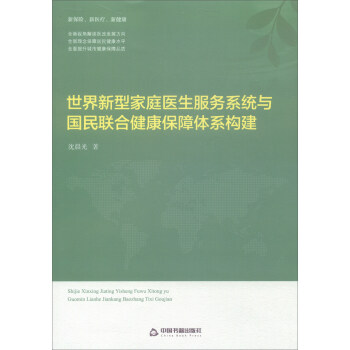
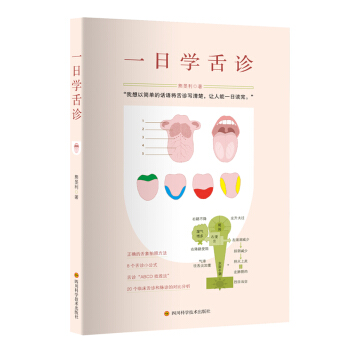
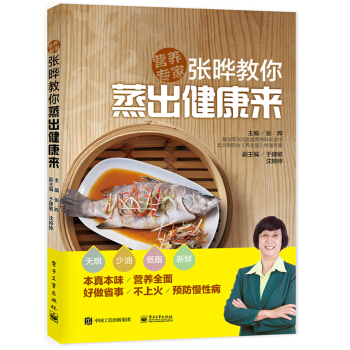
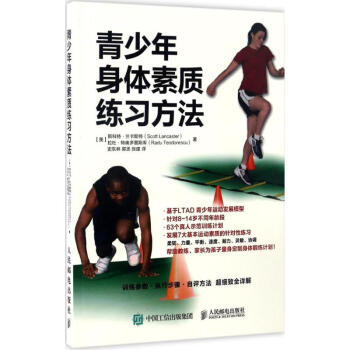


![器械健身完全指南(修订版)(附DVD光盘1张) [Perfect Guide of Instrument Gym] pdf epub mobi 电子书 下载](https://pic.windowsfront.com/10639985/5732fde6N6d2b365f.jpg)
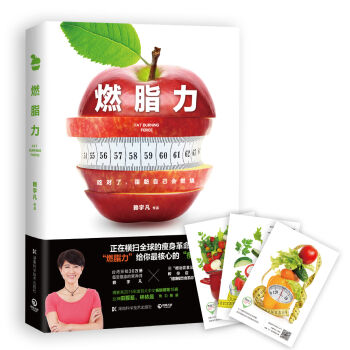
![轻疗愈系列:轻疗愈+轻疗愈2+轻疗愈3(套装共3册) [The Tapping Solution] pdf epub mobi 电子书 下载](https://pic.windowsfront.com/12070866/582e708cNaf11d097.jpg)
